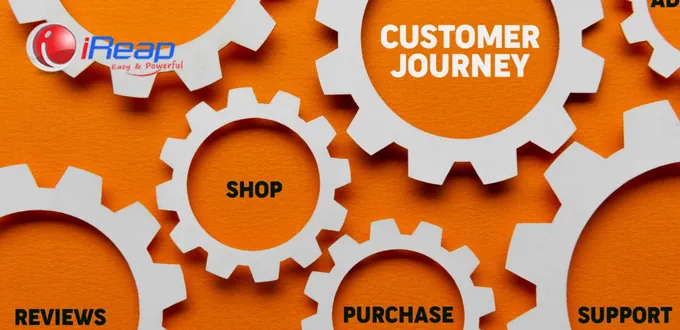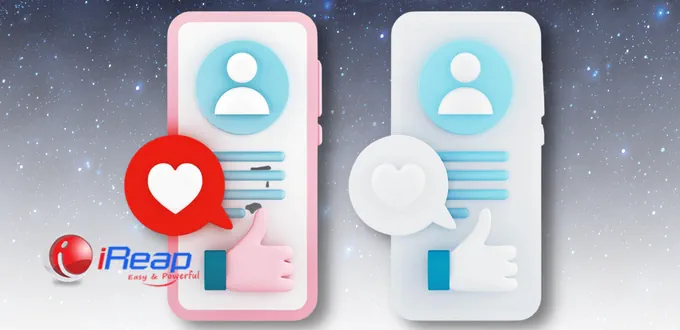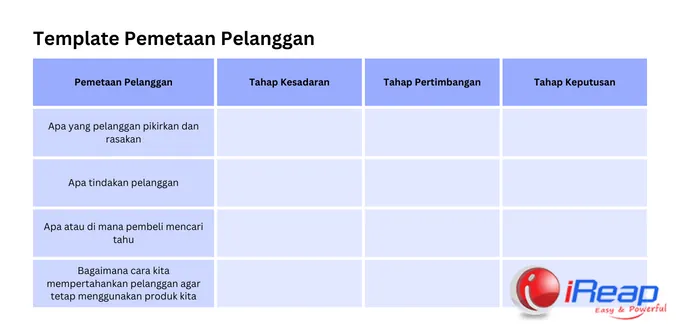
What is the customer journey map flows? You can set goals, create buyer personas, list touchpoints, map types of customer journeys, list available resources and services, and so on.
To make a customer journey map, you first need to know what a customer journey map is and its flow. Check out the full explanation in this article.
What is a Customer Journey Map?
The customer journey map (CJM) is a visual form of the customer journey, which maps out the steps consumers take when interacting with your brand or product.
Even though it can’t give a 100 percent accurate picture, this map will help you identify how consumers interact with brands, such as where they know business products and services, how they get information, and what drives them to buy products.
Through CJM, you can identify which media consumers access most often, which business services they use, and even how often they contact customer service.
How to Make a Customer Journey Map
1. Set Your Goals Create a Customer Journey Map
You need to set a goal until you like someone who wants to travel.
So, first, set the goals you want to achieve by making a customer journey map. Is it to build brand awareness, and interaction, introduce new services, create customer databases, and so on?

2. Determine the Main Target Buyer Persona
CJM is a useful tool for understanding consumer mindsets. But before you can make it, you need to know first who will be your consumers. That’s why you need to create a buyer persona or profile of a potential customer.
How to create a buyer persona, first determine their name, age, profession, frustrations or problems they face, and expectations. Even though these customer profiles are fictional, they can represent your potential customers.
Then, choose only one to two personas that can represent the majority of consumers. Prioritize these potential customers relevant to your product, or they have the potential to become product users.
In addition, make sure the two personas can represent the consumer’s journey in interacting with your brand.
3. Create a Touchpoint List
Touchpoints are points where consumers meet and interact with your brand and products. For example, consumers first get to know a product from advertisements or articles on the website, or it could be after contacting customer service.
There are several things that you need to pay attention to when determining a touchpoint, namely:
- What do consumers do when they interact with a brand? Is it after reading email marketing, clicking links that lead to websites, or viewing content on social media?
- What emotions and motivations make consumers discover more about your business products and services?
- Problems or obstacles that keep consumers from buying your product, for example, shipping costs and high product prices. Products can also be hard to come by.
4. Select the Type of Customer Journey Map you want to use
In general, there are four types of CJM that you can choose depending on your needs and goals, namely CJM in current conditions, daily conditions, future conditions, and service frameworks.
Choose one type of CJM according to your goals at the beginning of making CJM. Here’s the explanation:
- CJM current state is CJM which contains descriptions of actions, thoughts, and feelings that consumers are currently feeling when interacting with your brand. Using this type of customer journey mapping will help you understand the customer experience and improve it gradually.
- CJM contains consumers’ thoughts, actions, and feelings in all their daily activities. This is not only related to your brand but also other brands. Apply this type of CJM if you want to understand the whole life that consumers live, including their choices to satisfy their needs and wants.
- CJM future state describes all consumer behavior related to your brand in the future. You can use this type of CJM if you want to explain the vision and mission of the brand more specifically.
- CJM service framework describes various factors related to the consumer experience, such as the technology and applications used, the process that consumers must go through to be able to interact with the brand, and so on.

5. Available Resources and Services You Can Provide to Help Customers
After choosing which CJM to use, it’s time to use the resources and services you can provide to help consumers. Examples of these resources and services are customer service that can help consumers use your products.
6. Try Follow Travel Map and Analyze
Next, follow the CJM you have compiled and do it. It’s best to try the customer journey mapping you have made yourself.
If you already know the results, ask consumers to try it too. In this way, you can find the weaknesses, strengths, or whether or not you need to make changes.
7. Perform Updates Based on Analysis Results and Make Changes If Necessary
You need to follow up on the results of the analysis that has been done. If you need to make changes, then make a list of changes that need to be made. Then update the customer journey mapping that has been made.
The goal is to increase consumer loyalty, including expanding the use of your products, services, and business services.
Customer Journey Map Template

How can you now make a customer journey map (CJM)? Apart from getting to know the customer journey flow, you also need to know about customer service, which is essential to increase their loyalty and important elements in CJM. Learn about both: Elements in Customer Journey Mapping and Customer Service Blueprints.



